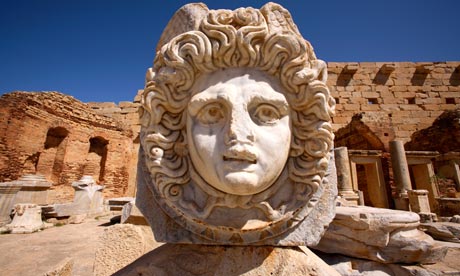By Terry Hewton
This article was published in The Guardian on 23/11/2010

Given Libya's contentious past, we found it a relatively safe country to visit and we were very comfortable there. And, apart from the odd breathtaking moment, even travelling on the roads – the subject of a travel warning – seemed safe enough.
The main aim was to see the Roman ruins – specifically: the ancient cities of Leptis Magna and Sabratha. These sites are truly magnificent in their mystique. In part, this is due to their seaside setting. The Mediterranean makes a wonderful blue backdrop to the temples and theatres, heightening their feeling of awesome mystery.
It also stems from the relative absence of other tourists: visitors have the strong feeling of stumbling into an ancient setting with little between you and the people who once lived there.
I was particularly interested in connection between these places and early Christian history. Being brought up in the Methodist church in the 1950s and 60s has left me, an open-minded non-believer, with fond memories of the church of my youth and a lingering curiosity about the real history lurking beneath the appealing, but implausible, story of the early centuries of the Christian church. These two sites were a good place to wander around ruminating on what archaeology can and can't say about that early history.
Our guides – Fathe and Mohamed – were articulate and well-informed. It was their perspective that particularly interested me. As inhabitants of the Socialist People's Libyan Arab Jamahiriya (the country's formal title since 1977) they were very conscious of the fact that the ancient monuments mark the presence of wealthy Romans more than they do plebeian ones.
And for guides in a strict Muslim country they had a delightfully robust sense of humour. I particularly enjoyed the story, narrated in one temple ruin, about the mythical figure who lost "the piece of his body necessary for reproduction" and how another mythical figure, who wanted to have his child, resolved the difficulty.
In the Roman theatre at Leptis Magna there were hordes of schoolchildren on an end-of-term excursion. They had just finished their exams and were exuberant. Even their frazzled teachers looked happy in a war-weary kind of way. It was another reminder that people are people – anywhere in the world.
No comments:
Post a Comment